Did you know that 86 percent of senior-level marketers agree that it is crucial to create a cohesive customer journey across all touchpoints and channels? However, in our ever-evolving digital world, the classic AIDA model and the linear buyer’s journey are just simply not enough.
Customer expectations are assuredly going through a considerable transformation. Can your brand and website meet these expectations and guarantee that the customer journey is smooth?
In this article, we will take a look at what a nonlinear customer journey is, and how to optimize your e-commerce site for nonlinear customer journeys. Also, we will give you a few tips and tricks on how to build a funnel for different types of buyer’s journeys. And even introduce you to a few tools to optimize your website and conversion rates.
Are you interested in using the full potential of an optimized nonlinear customer journey? Keep on reading.
Table of Contents
What is the difference between Buyer’s, and Customer Journey?
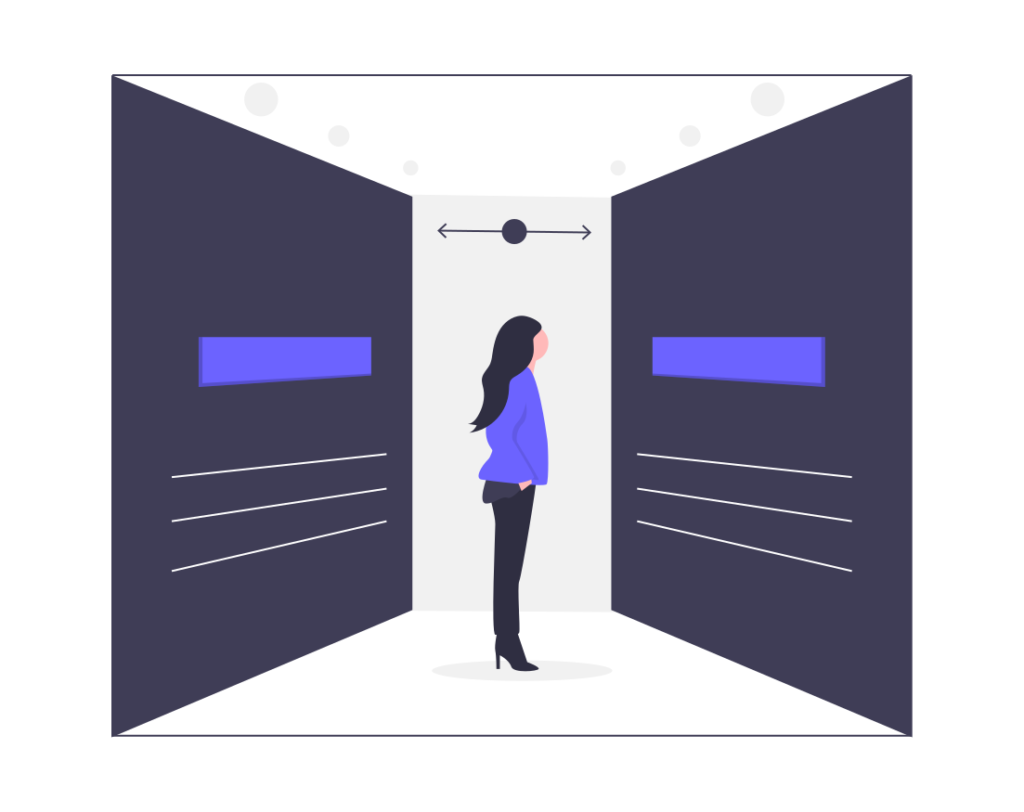
The buyer’s journey
The buyer’s journey consists of the stages that a consumer undergoes to make a purchase decision on a product or service from a specific web development company. A simple buyer journey includes three stages: awareness, consideration, decision. In the awareness stage, buyers realize that they have a problem that needs to be solved so they try to find a solution to that in the consideration stage. Finally, they decide on what product or service is the best for their specific problem in the decision stage.
The AIDA model
This is where the AIDA model comes into play for those on the other side of e-commerce. It is also called the hierarchy of effects model, which actively demonstrates that the consumer must go through each and every stage to complete the aspired action. The AIDA is short for attention, interest, desire, and action. It follows a simple logic to convert a potential buyer into an actual paying customer.

(Source)
First, you need to attract attention with brand awareness or great copywriting. After that, you have to generate interest and “hook them” to engage. Then comes the part where you should stimulate desire, to make people feel like they want your product or service. Lastly, you need to spur into action so they actually decide on buying it.
Based on these, the buyer’s journey ends with the purchase. However, in real life, this is not the case because your relationship and contact with the customer do not end when they have made the act of buying.
The Customer Journey
This logic is followed by the customer journey theory. Customer journey helps to understand the interactions of a certain persona with your digital product. It visualizes your persona’s path which is the process of them getting in connection with your digital product. After all, the real success of a business ultimately depends on customer retention. A classic customer journey consists of five stages:
- awareness
- consideration
- purchase
- retention
- advocacy.
As you can see, the first two stages are similar to the concept of the AIDA model. The main difference is that the act of buying is the last stage of the buyer’s journey, however, it is right in the middle in the case of the customer journey. Then come retention and advocacy which play a key role in judging your business because of the event happening here (product receipt, issues, and response, social complaint, etc.).
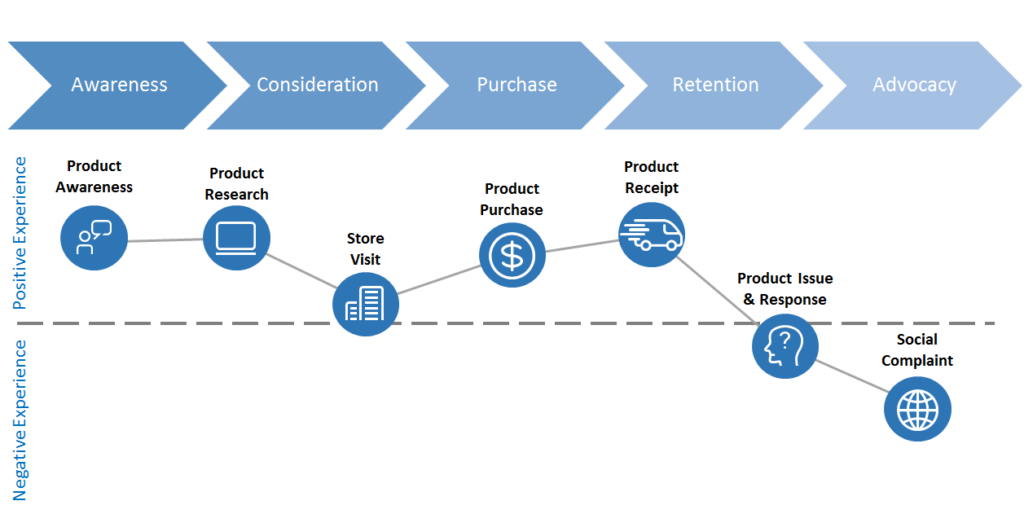
(Source)
All things considered, it is not that simple for business owners or anyone else included in e-commerce. Nowadays, this journey is a lot more complicated. When a salesperson managed the buyer’s journey, it was enough. Today buyers are in control. With plenty of information on the internet, media consumption, and the possibility to connect with almost everyone in the world is significant. As a result, buyers no longer follow a linear path with a clear beginning, middle, and end.
What are nonlinear customer journeys?
The in-question purchasing process makes people go round and round, back and forth between ads, forums, social media, e-commerce websites, emails, blogs, etc. Present days, making a quick and assured buying decision is rare, the only exception may generally appear in the case of FMCG products. With this in mind, be it marketing, sales, or conversion the funnel is not the right way to represent a customer journey, the particular reason for this circumstance is that it is not linear.
To stay up to date and get the most out of our business, you need to think in a non-linear customer journey. To give an illustration, some display this journey as a circle, others represent them as a shapeless interconnected process. Besides that, however, their other characteristics are the same. In the case of non-linear journeys, customers can enter, exit, jump, turn back, get stuck, etc. at any level, any time.
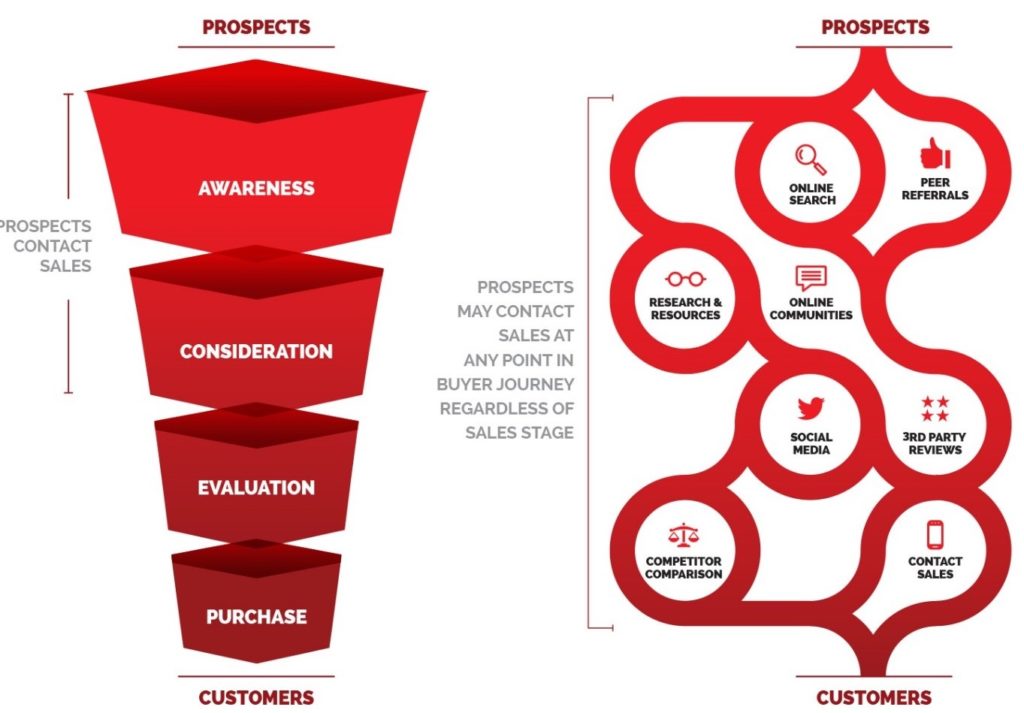
(Source)
People are just a few clicks away from personalized product recommendations, many comparisons on products and services, review sites, and even proposals and pricing from other companies, competitors. People interact with brands across many touchpoints, and they determine their own path to purchase. It is clear to see that the traditional marketing tools and web optimization strategies are out of date, we need something else, different, and better.
The importance of a customer journey maps
A customer journey is about understanding your users, how they behave while they are visiting your website, and what you can do to improve their journey, so they continue coming back to you. How to do that?

(Source)
The answer is customer journey mapping! It is a visual representation of the process a customer or prospect goes through to achieve a goal with your company. With the help of a customer journey map, you can get a better idea of your customers’ motivations, needs, and pain points. Analyzing user behavior also helps your business to learn how your customers travel through the whole sales process and how they feel during their time there. With this method, decision-makers can focus on the customer, and make sure that every step of the conversion funnel is optimized to make the buying experience easier and more satisfying for the leads.
How to build a funnel for nonlinear customer journeys
To build a funnel for non-linear customer journeys, you need to map out the customer journey first. In this section, we will show you how to do that step-by-step.
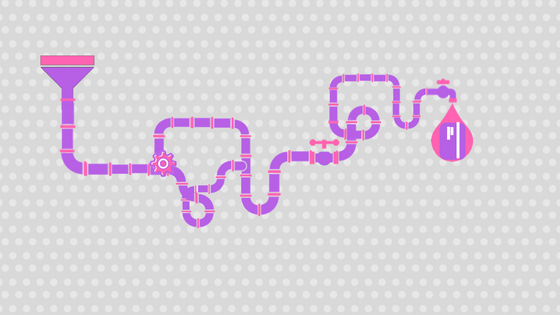
1. Set your goals
First thing first, you need to clarify why you want or need this customer journey map. Define your goals with mapping, who it is about, what the basis is. Asking yourself these questions might ring the bell, that you need to create buyer persona(s). A persona has all the demographics and psychographic features that characterize your average customer.
2. Create your buyer persona
There are several ways to create a profile for your persona. Working with customer feedback or simple questionnaires is a simple way to get to know them more. Ask questions about how they heard about your company, what they find attractive, their goals with your business or what problems they solve with it, etc.
Another way is user testing and website analytics. Here you should focus on how much time they spend on your website, how they navigate, the usage of support, etc. There are full-scale online web analytics tools that serve you the most important metrics on a silver plate. Get visualized data about the volume of your visitors, visited pages, and the load time of your pages. Also, you can check the source of traffic and what devices they are coming from.
3. Choose your target audience
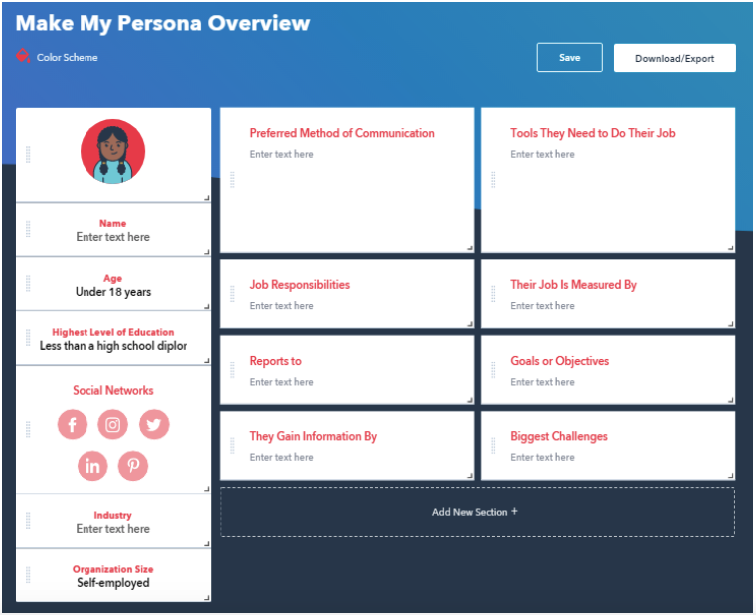
Now you know your personas. After that, if you have a generous number of them you need to narrow them down to have an optimizable funnel and an accurate customer journey map. Remember, a customer journey is a path that tracks a persona’s experience with your website. It will not be accurate if you group too many people personas in a customer journey. Picking the most common persona is a great choice for your first customer journey map.
4. Determine the touchpoints
Once you have picked the accurate persona, you need to determine all the points where they meet with your product, service, or business. This step is important in the mapping process because this way you can understand the objectives of the customer journey. You need to look beyond your website and think about channels like social media, paid ads, email marketing, review sites and forums, blog, etc.
This way you have a better idea of what actions your customers take, and what are the emotions and motivations behind those actions. By recognizing these motives you can actually see what the main obstacles and pain points are.
5. Create a graphic for your map

There are countless options for creating graphics for non-linear customer journey maps as well. Regardless of the type, you should display actions, thoughts, and emotions. Apply visual elements for faster analysis.
6. Analyze and optimize
Creating a customer journey map usually makes you realize your job is not done yet. You need to analyze and make changes based on the results. It does not matter how small or big the adjustments are, they will probably be effective because you do them based on real user data.
But how can you do that? In this case, we can also call web analytics tools for help.
Capturly’s conversion funnel tool
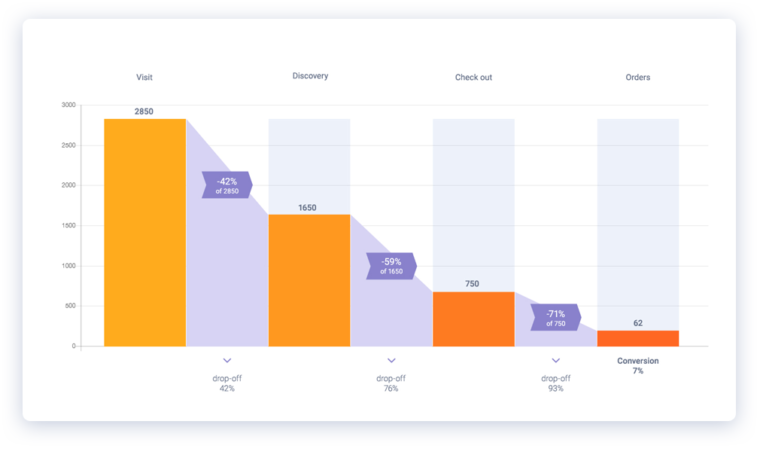
You can track your traffic and drop-offs at every stage of your conversion funnel. There are effective tools for that on the market, such as Capturly’s conversion funnel tool. This tool enables you to identify key user journeys and get more information about the stages. With all the knowledge provided, it allows you to analyze all the data and get the maximum potential out of your website. By analyzing the user journey stages, you can find out where the number of your visitors drops off and why.
Setting up conversion funnels in Capturly is simple. You have the ability to define each step of your funnel by adding the URL of a certain page. Also, you can go advanced and create custom events to track multiple conversion funnels. Make your onboarding process user-friendly and catch your users before it’s too late. Do not forget, the success of your conversion funnel is the success of your e-commerce website.
How to optimize non-linear customer journeys
Now that we learned what is the difference between buyer’s journey and customer journey, why the traditional linear path is not relevant anymore, and saw how to build a funnel it is time to understand how you can optimize your e-commerce website for non-linear customer journeys. Tools and strategies are similar, the key is in how you use them.
1.Identify customer behavior

It is the first step to a successful optimization strategy. You need to know how your customers behave, understand their value drivers and touchpoints with your business. It is actually pretty similar to mapping out a customer journey, but this time you need to map your customer KPIs with operational KPIs. Some of the most common KPIs to use in this case are:
- NPS: Net Promoter Score
- CSAT: Customer Satisfaction
- CTAs: Engagement with Call to Actions
- Churn rate
- Retention rate
- CLV: Customer Lifetime Value
2. Influencer marketing
Influencers play a huge part in today’s marketing activities. They have the power to influence people to jump funnels or stages within the customer journey. Behind the psychology of influencer marketing is that people prefer to believe in other people’s opinions. It is definitely worth investing in third-party endorsements and brand ambassadors promoting your business if you have not already.
3. The power of communities
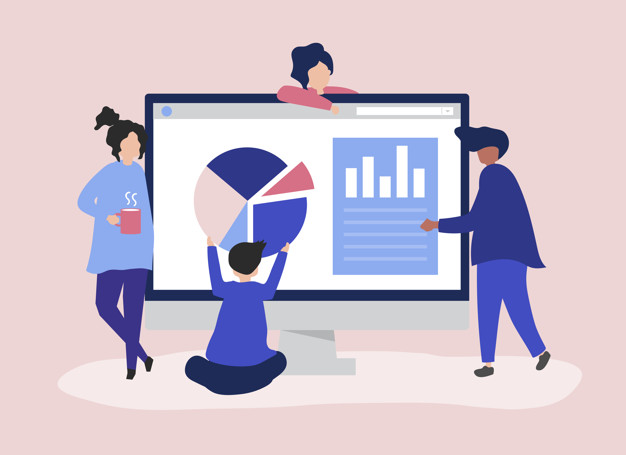
This is an idea similar to the previous point. Most people are members of different types of communities like personal or professional. The appearance and spread of these are determined by social media sites like Facebook, LinkedIn, Twitter, etc. In these communities, potential buyers can find solutions to their problems, get to know more about the products.
It is worth investing time and energy (and some money) into these social groups. Create content like articles, guides, infographics, valuable insights, case studies to get the awareness and push your leads and potential buyers to the consideration stage. To avoid people exit or turn back from this stage, you need to create good public opinion. If someone has a bad experience with your product or service at any stage, you should solve their problem as soon as possible and compensate them to avoid negative reviews and public voice.
4. Strengthen the impulse purchase with FOMO
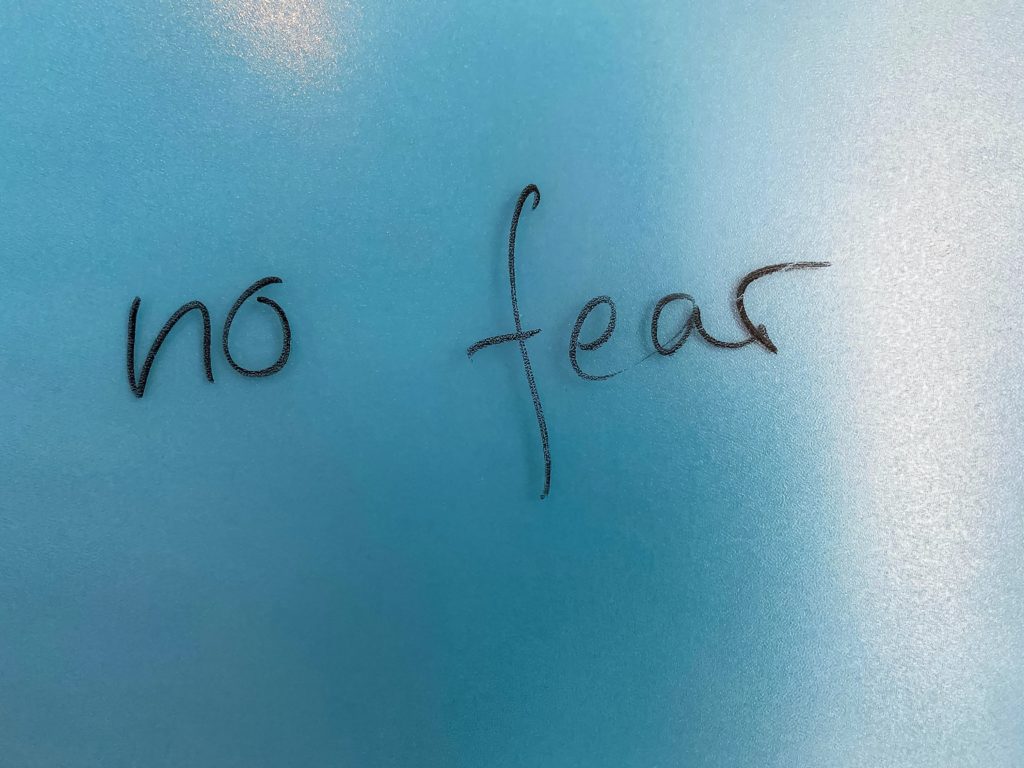
If you want to encourage leads to move on in the non-linear customer journey, you should strengthen the impulse purchase with the fear of missing out. This technique can shorten the funnel significantly. There is simple psychology behind this phenomenon: people do not want to miss out on anything in our tech-savvy, ever-evolving world. Offer great time-bound deals to motivate potential buyers with the idea of getting the best deal if they buy your product or service right there, in a short period of time. Just along the line of how lifetime deals work in the SaaS (software as a service) world.
5. Call back potential buyers
Now customers are aware of your product or service, they are in the consideration stage already, but converting them into paying customers still seems particularly difficult. What can you do?
-
Cashback and refund policies
If you are facing doubtful or skeptic buyers, offering cashback and refunds could be a great sales solution. This gives them just enough support that makes it easier to get themselves buying.
-
Coupons and Vouchers
In case you are aware that you are targeting price-sensitive personas, coupons and vouchers are an excellent way to encourage them to make the purchase decision. If you are selling a product you have the chance to offer free shipping as well. It is a great strategy if you see a high bounce rate on the pages where you show the full price like order confirmation, shipping information, cart value, etc.
6. Optimize your website with web analytics
If you really want to step up your optimization game, you should definitely try website analytics tools. There are great and effective free options on the market like Capturly analytics if you are unsure or just not convinced yet.
Session replays
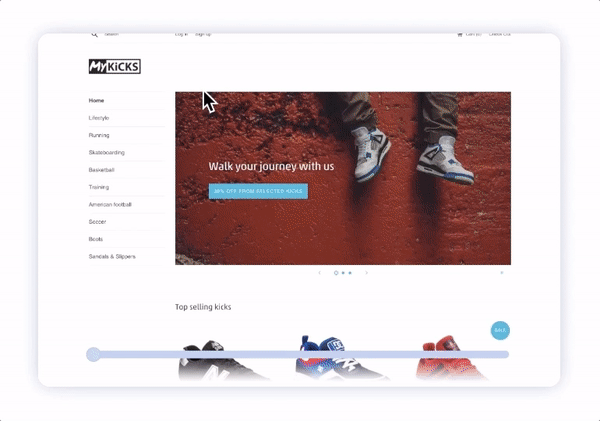
With session recording, you can see what your visitors do. Every click, scroll, and mouse movement. It is an excellent way to discover if your visitors encounter any problem on your website. It helps you understand the people behind the numbers. With this help, you can find the problematic sub-pages where people may exit or turn back in the customer journey. It can be just as simple as a bad CTA, unnecessary log-in process, or a hidden search option. Fixing these problems will help you get them to move on and actually buy your product or service.
Heatmaps
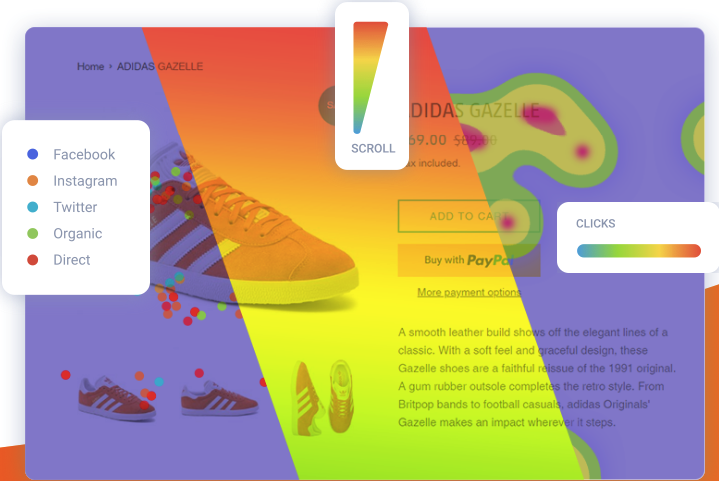
Website click heatmaps show you an aggregated picture of your users’ clicks. With this tool, you can find the popular CTAs, texts, and images. It is beneficial, the particular reason for this circumstance is that it tells you which parts of your website should be clickable and which should not. Also, there are scroll heatmaps, which are able to show you how far your visitors scroll down on your website. It is important when you want to make sure that people on your website see certain content or CTA. It can also be a threatening sign where your visitors leave your website without completing the desired action.
These website analytics tools help you with the optimization process of your website. With this in mind, you need to assure that your users experience a smooth UX on your website. This will significantly increase the chances of your lead progressing on the journey.
7. Retargeting
Retargeting is a powerful and effective technique to push people to remain in your sales funnel and move on in the non-linear customer journey. You can get more information and insights on how people use your website so you have the chance to optimize your site and target your audience. With this, you can increase your brand awareness as well.

8. Redefining advocacy
Social influence is huge. Businesses need to be aware that people who are not their customers can easily be the biggest advocates and product evangelists and vice versa. Consumers engaging with brands through events, content, social media, etc. As we have already discussed, people can enter in a non-linear customer journey anytime, anywhere. Even if you do not pay much attention to these elements yet, you need to focus on public opinion, brand ambassadors, and advocates because their presence and power can be decisive.
Wrapping up
To sum up everything that has been stated so far, linear customer journeys are dying. To keep up with your competitors, you need to recognize the changes in the e-commerce world and the importance of non-linear customer journeys. Building a funnel and mapping a customer journey is a basic step to success. But you need to analyze and optimize for a better customer journey, smoother user experience, and optimized website. As in many other areas of the digital world, in this case, we can also use the help of web analytics tools. Most importantly, do not forget that it is a never-ending and continuous process.
Don't forget, sharing is caring! :)

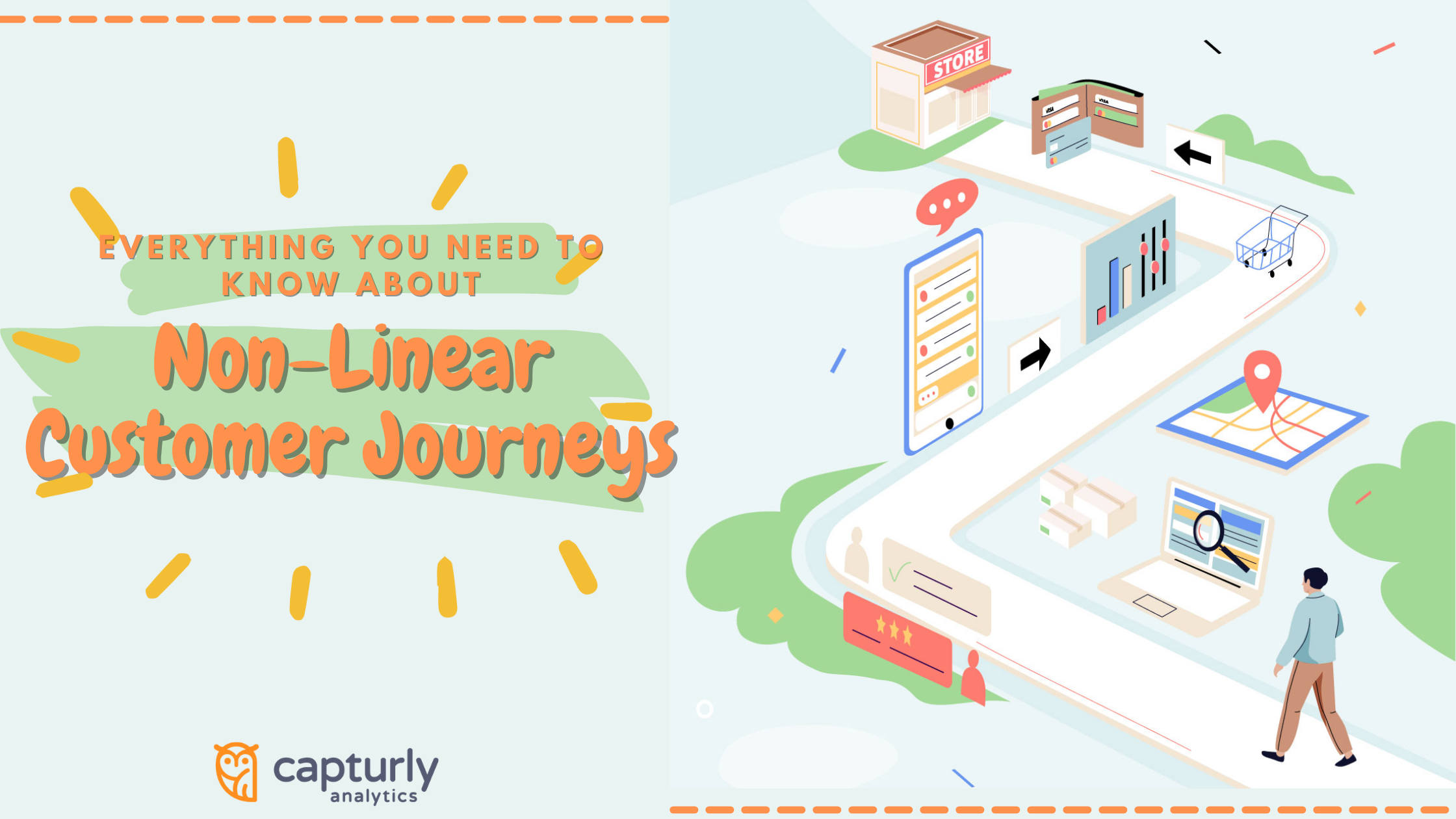
7 Comments
Sanchita Bhaduri
2023-03-24 at 06:49Very good blog
Sanjay
2023-04-13 at 08:40Great post. I write and manage two blogs by myself and I know the efforts it takes to write such an elaborate one.
Fintech App Development
2023-04-20 at 06:28Thanks for sharing this great information your content is very informative keep sharing like this.
Travel API
2023-05-04 at 12:29very good article by the way , thanks for sharing this!
Metaverse NFT Marketplace Development
2023-05-25 at 07:46I really enjoyed reading your blog post about non-linear customer journeys. I think it’s an important topic that businesses need to be aware of. In today’s digital world, customers are more likely to have a non-linear journey than a linear one. This means that they may interact with your brand in a variety of ways, at different points in time, and through different channels. It’s important for businesses to be able to track and understand these interactions so that they can provide a seamless customer experience.